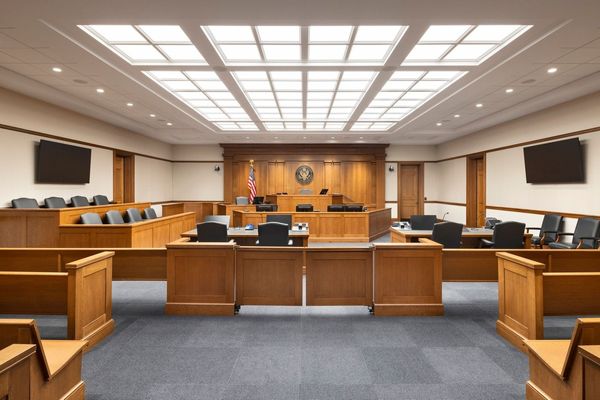A slice of Mysuru which charmed generations of tourists and locals alike - being the single source for retail purchase of commodities for nearly 140 years - is on the brink disappearing from the city’s landscape.
The future is grim with the political representatives and the Government supportive of its demolition, ostensibly in ‘’public interest’’, while the litigants, who had approached the High Court to stall the Government move, have lost the legal battle though an appeal is pending before the Apex Court.
It stood tall
The historic Devaraja Market has brought together consumers, farmers and retailers since generations ever since it was established in 1880s. Though it faced myriad challenges that threatened its existence including multiple incidents of fire, the Devaraja Market withstood it all.
The iconic market was reflective of all that summed up the characteristics of Mysuru: sometimes noisy, colourful but also charming with an old world allure and dealing with traditional ingredients for which Mysuru is renowned: agarbathies or incense sticks, spices, flowers, garlands and piles of Kumkum stacked in a row and whose images dotted the guidebooks that listed Devaraja Market as a ‘’must visit’’ when in Mysuru.
Planned market
It is not for sentimental reasons alone that there is opposition to the proposed demolition of the heritage market. It has a slice of Mysuru’s history embedded to it and is among the nearly 140 notified heritage structures. What set apart Devaraja Market from the rest is that it was planned way back in 1886 unlike the typical bazaars that evolve in most towns and was the norm till a few decades ago before the concept of shopping plazas and malls emerged.
Heritage expert and author T.P. Issar in his book The Royal City writes, ‘’In Mysore City, it is the planned markets, rather than the old evolved pettahs, which give it its familiar – in many ways unique – character’’.
Enclosed in a courtyard-kind of structure and mainly open to sky, the rectangular market is spread over 3.67 acres and was the biggest and the most vibrant of its kind in its heydays.
The market was built during the regime of Chamaraja Wadiyar X. and according to some scholars it was named after Dodda Devaraja Wadiyar who ruled in the 17th century C.E.
Forerunner to malls
It was the site of a traditional weekly market and a forerunner to the modern malls except that it dealt with traditional commodities. The market has nearly 825 shops that have been manned by generation of traders who know no other vocation but trading in traditional commodities and loathe to shift elsewhere.
The Devaraja Market has spanned hundreds of other business establishments on the periphery and the entire area bordered by major arterial roads constitute the heart of old Mysuru.
All through the ages the Mysuru City Corporation (MCC) and the State Government neither took pains to maintain it nor bothered about the structural damage caused by tenants who took up ad hoc minor extension works in any which way that suited them.
Even as the debate on conservation vs demolition of the heritage market was raging for years, the north gate abutting the Dhanavantri Road collapsed in August 2016. The video documenting the collapse - and which was captured from a vantage point - went viral and led to speculation that the collapse was engineered deliberately to pave way for demolition.
What task force said
A task force was constituted by the Government in 2016 and it recommended that the building be demolished while a parallel body of experts from the Indian Heritage City Network questioned the finding and submitted another report stating that it can be conserved.
Prof. N.S. Rangaraju of INTACH Mysuru who is among those striving to save the heritage market, argued that the expert body was deliberately stacked with structural engineers with no knowledge of heritage conservation while architects who were keen to preserve the market, were deliberately kept out, and hence, he put a question mark on the validity of the final report.
Over the years, teams of conservation architects that studied the Devaraja Market favoured conservation while civil and structural engineers from the PWD and the Government preferred demolition and reconstruction.
In the courts
Finally, the District Heritage and Conservation Committee chaired by the Deputy Commissioner ruled that the Devaraja Market was a ‘’fit case’’ for demolition. In the words of a senior bureaucrat of the day, ‘’a clear cut decision’’ was taken favouring demolition and this forced the tenants to approach the High Court of Karnataka to bring in a stay.
But the Court upheld the expert body’s recommendations, thus removing the legal obstruction for demolition.
But the demolition is something which will not happen overnight as the Government is cash-strapped to release funds for reconstruction of a new market which will not cost less than a few hundred crores of rupees. Again, a DPR finalizing the design etc has to be prepared none of which are a priority for this government as of now.
A breathter
This has given a breather to the conservationists and hence a last-ditch effort is being made to save the heritage market by drumming up public opinion. A group of professionals recently met at the Wadiyar Centre for Architecture Mysuru, and experts from INTACH Bengaluru chapter and Esthétique Architects, conducted a workshop to draw lessons from conservation efforts from different parts of the country and reflect on how it has helped the local economy.
The case studies were from Jaipur and Kolkata and Dr. Shikha Jain, conservation specialist and Founder Director of Development and Research Organisation for Nature, Arts and Heritage (DRONAH) made an online presentation on restoration of nearly a dozen traditional markets in Jaipur. These restored markets, it was pointed out, are now dynamic economic centres of Jaipur which has similar traits in terms of heritage, history and economy as that of Mysuru.
Prof Sanghamitra Basu, a conservation architect and a retired faculty of IIT Kharagpur, and member of the National Monuments Authority, Ministry of Culture, GOI, underlined the importance of conservation-led development based on an example from Kolkata.
The thrust of her presentation was that conservation was not about saving buildings but reviving the local economy, a view that will find strong resonance in case of conserving Devaraja Market.
Collective memory
Economics apart, the Devaraja Market is part of the collective memory and consciousness of people of Mysuru – just as Chamundi Hills is - and the market’s demolition would obliterate a part of the city’s heritage apart from its tangible and intangible values. A view echoed by the scion of the erstwhile royal family Yaduveer Krishnadatta Chamaraja Wadiyar who highlighted this aspect.
Besides, he has dovetailed the conservation efforts to the concept of sustainable development to argue that while restoration of the market was environmentally sustainable, demolition and reconstruction was antithetical to it.
Another expert, Meera Iyer of INTACH, Bengaluru, drew from the conservation saga of the Attara Kacheri in Bengaluru to point out that there was still hope for the Devaraja Market. She highlighted the public activism that helped save Attara Kacheri which, like the Devaraja Market, was condemned for demolition in the 1980s and 1990s.
While there are any number of examples of heritage buildings being restored and adapted, experts like Rangaraju have other concerns that have a bearing on the future. ‘’If the view that there was no alternative but to demolish the Devaraja Market was not challenged, it will set a precedence and will pose danger to nearly 500 other heritage structures in Mysuru,” according to Rangaraju.
Bolstering the conservationists argument that the heritage market can be saved, are live examples from Mysuru itself of such efforts including the conservation of Radhakrishnan’s Bungalow and the Oriental Research Institute which were restored by the University of Mysore.
A ray of hope
Amidst the ongoing debate surrounding the future of the Devaraja Market, yet another heritage building which had all but collapsed and was staring at an uncertain future, is set to be conserved and restored to its former glory.
It is the Jayalakshmi Vilas Mansion – again in the campus of the University of Mysore - which houses a folklore library. It is set to be restored with private funding to the tune of ₹30 crore.
Such examples – with experience of similar restoration efforts from elsewhere in the country - are bound to help raise public interest and awareness about what is possible in the realms of heritage conservation giving a glimmer of hope that Devaraja Market too may get a new lease of life.







